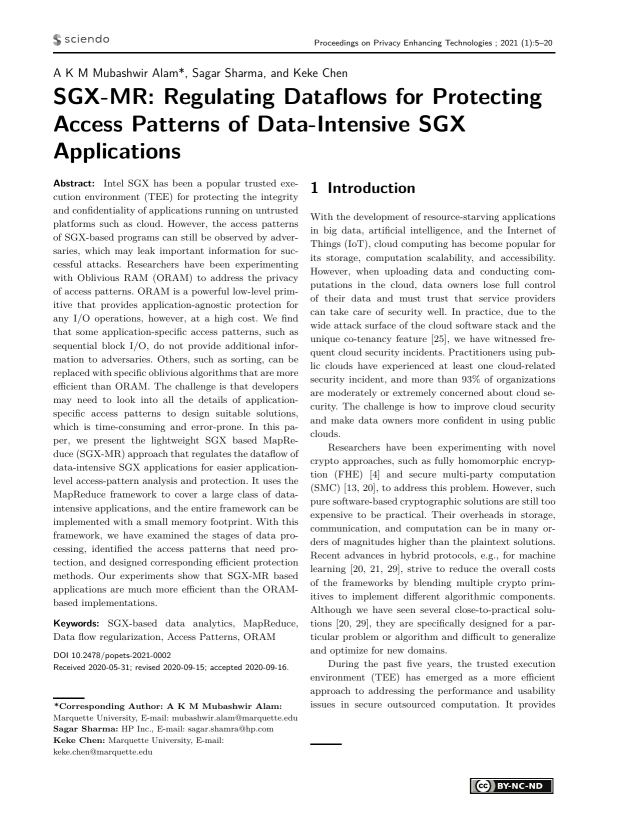SGX-MR: Regulating Dataflows for Protecting Access Patterns of Data-Intensive SGX Applications
Authors: A K M Mubashwir Alam (Marquette University), Sagar Sharma (HP Inc.), Keke Chen (Marquette University)
Volume: 2021
Issue: 1
Pages: 5–20
DOI: https://doi.org/10.2478/popets-2021-0002
Abstract: Intel SGX has been a popular trusted execution environment (TEE) for protecting the integrity and confidentiality of applications running on untrusted platforms such as cloud. However, the access patterns of SGX-based programs can still be observed by adversaries, which may leak important information for successful attacks. Researchers have been experimenting with Oblivious RAM (ORAM) to address the privacy of access patterns. ORAM is a powerful low-level primitive that provides application-agnostic protection for any I/O operations, however, at a high cost. We find that some application-specific access patterns, such as sequential block I/O, do not provide additional information to adversaries. Others, such as sorting, can be replaced with specific oblivious algorithms that are more efficient than ORAM. The challenge is that developers may need to look into all the details of applicationspecific access patterns to design suitable solutions, which is time-consuming and error-prone. In this paper, we present the lightweight SGX based MapReduce (SGX-MR) approach that regulates the dataflow of data-intensive SGX applications for easier applicationlevel access-pattern analysis and protection. It uses the MapReduce framework to cover a large class of dataintensive applications, and the entire framework can be implemented with a small memory footprint. With this framework, we have examined the stages of data processing, identified the access patterns that need protection, and designed corresponding efficient protection methods. Our experiments show that SGX-MR based applications are much more efficient than the ORAMbased implementations.
Keywords: SGX-based data analytics, MapReduce, Data flow regularization, Access Patterns, ORAM
Copyright in PoPETs articles are held by their authors. This article is published under a Creative Commons Attribution-NonCommercial-NoDerivs 3.0 license.

